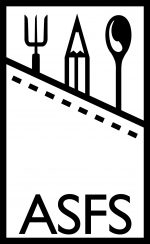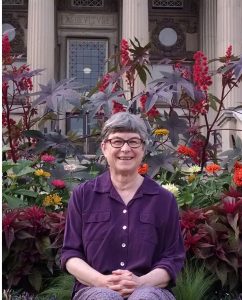
In front of UW-Madison’s Agricultural Hall flower & produce display garden. ©Jared Lee Schmidt, 2017.
Dr. Janet C. Gilmore is Professor of Landscape Architecture & Folklore Studies at the University of Wisconsin Madison. She serves as faculty for the Center for the Study of Upper Midwestern Cultures, the Department of Planning & Landscape Architecture, the Folklore Program, and is affiliated with the Material Culture Certificate Program, Buildings Landscapes Cultures Companion Program with UW-Milwaukee, and the former Department of Scandinavian Studies. Beth Forrest and Greg de St. Maurice conducted this interview with Janet in June 2018.
You enter the world of food studies through landscape architecture and folklore. Can you tell us a bit more about the intersection of these?
I joined University of Wisconsin-Madison’s Folklore Program and Department of Landscape Architecture in Fall 2003 as an “Expressive Culture and Diversity of the Upper Midwest” cluster faculty, umbilically connected to UW-Madison’s regional arts-humanities-interpretive social science Center for the Study of Upper Midwestern Cultures. I interpreted my job to integrate aspects of folklore study and historical and cultural landscapes, including cultural conservation and historic preservation, through research, teaching, and distinctive outreach type class 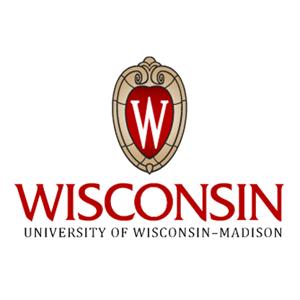 formats. In these types of classes we worked with off-campus non-profit cultural organizations, based on my two decades of public folklore work in the Upper Midwest and my home region of the Pacific Northwest. On a roll at the time to begin publishing my experiences in documenting and presenting commercial fishing people, occupational culture, and foodways, I quickly appropriated several existing folklore performance study classes to orchestrate field schools and bend festival classes to focus on foodways. Soon I was drawing students to these classes, and as I developed them, I also began to bring in landscape and site-spatially oriented perspectives that I was learning from colleagues as I taught existing cultural and historical landscape preservation classes. I was not formally trained in Landscape Architecture, design practice, or historic preservation (especially of landscapes), but had been brought up as the child of two architect parents.
formats. In these types of classes we worked with off-campus non-profit cultural organizations, based on my two decades of public folklore work in the Upper Midwest and my home region of the Pacific Northwest. On a roll at the time to begin publishing my experiences in documenting and presenting commercial fishing people, occupational culture, and foodways, I quickly appropriated several existing folklore performance study classes to orchestrate field schools and bend festival classes to focus on foodways. Soon I was drawing students to these classes, and as I developed them, I also began to bring in landscape and site-spatially oriented perspectives that I was learning from colleagues as I taught existing cultural and historical landscape preservation classes. I was not formally trained in Landscape Architecture, design practice, or historic preservation (especially of landscapes), but had been brought up as the child of two architect parents.
I had known of the Department of Landscape Architecture’s reputation for its “wrecks and ruins” Upper Midwestern cultural landscape documentation and preservation program for decades, and was deeply privileged to overlap briefly with two now emeritus colleagues. In ensuing years, I have found festivals, foodways, and landscape perspectives fascinating in combination, allowing insights into time-space coordinates and working to make the site and spatial aspects of foodways performances more fully fleshed out and better integrated into food performance study. Through experimental creolized classes in “cultural landscapes of food,” “landscape narratives,” and “parks, outdoor, and indoor museums,” I work with students to experience and learn to observe, document, and comprehend cultural succession and cultural pluralism evident in varied cultural and historical landscape installations that often involve food, from micro to macro formats.
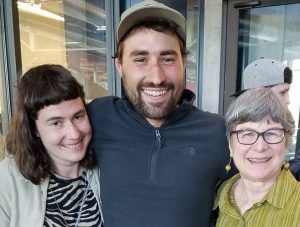
May 2018 with well-fed kids, Finn at center, and Bella, L, looking woozy from finishing up her MFA installation for Oregon College of Art & Craft, Portland, OR. ©Dee Vadnais, 2018.
I entered the “world of food studies” slowly but over many years. By the time I set off on my own during my college years, I had encountered numerous ranges of food preferences, aesthetics, exploration, experimentation, and other variations among family friends, my friends, roommates, and housemates. Soon I dedicated a couple of dinner preparation hours every evening to protect myself against the tendency for academic work to consume me if I didn’t watch out. With close friends of similar inclinations, I took interest in early food cooperatives, community food purchasing from local food suppliers, and the incredible restaurant scene then in Portland, Oregon while I attended the zany Reed College. Since that time, food cooperatives have remained mainstays wherever I’ve lived, and I contributed to early efforts to forge a cooperative and buying club in Bloomington, Indiana, before Blooming Foods [a cooperative market that opened in 1975] emerged. Since that time, the dinner hour has remained sacred protective space, and when I stray from the ritual, I know that my health and mental well-being have become compromised.
While I didn’t become one of the foodways devotees in Folklore until the late 1980s and early 1990s, my choice of dissertation topic in the late ‘70s focused on the commercial fishing industry on the southern Oregon Coast—and eerily connected to maritime architectural heritage on one side of my family, and boat piloting heritage on the other. For the most part I stopped short of a direct foodways orientation to this study, but to study fishing family involvement in fisheries, especially through their fishing boat and gear building, maintenance, and repair, meant I was necessarily engaged in learning about commercial fishing family and community networks oriented around capture, production, distribution, handling, preparation, and consumption of fish as food, from “surf to turf.”
Rather than pursue academic work professionally, I had turned to public folklore contract work in my home state and Upper Midwestern region in the 1980s. Heaviest into the mid-1990s, this work continued sporadically into the 2000s. While oriented mostly toward folk arts survey work, I made sure to use this opportunity to document food traditions as well as artistic aspects of commercial fishing, including foodways. Several of my contract jobs focused specifically on commercial fisheries documentation, and ultimately ranged more broadly across associated maritime occupational traditions like knotwork and rigging. During this time colleagues invited me to return to Upper Michigan communities to focus on their fish foodways, and others to interview farm cooks for a NW Wisconsin study of the area’s agricultural heritage. Many of the most significant documentary projects on which I worked resulted in substantial museum exhibitions, an area of interest where, besides documenting the region’s distinctive ethnic and occupational variety in foodways, I learned to use project documentation (archival collection materials) for exhibit design and production that slowly but surely emphasized foodways—including food landscapes—when possible.
digicoll.library.wisc.edu /w/wiarchives/csumc.html
Much of your research centers on “maritime occupational communities” — in both the Upper Peninsula and the Pacific Northwest. What led you to water?
Early family conditioning! Within my first year, my dad practiced flyfishing in a rocky mountain stream with me propped up in his backpack! Besides mountain streams where my dad wanted to fish, trying to desert us kids at the family campsite, we visited the Oregon Coast regularly. We kids could run along the beaches, prowl for creatures in rocky tidal pools, search for driftwood for my dad’s sculptures, dabble in the sand, build fires on the beach, and learn to beware of the ocean’s treachery. There was nothing like the fresh salt air, the dashing, crashing surf, the vastness of the sea, and the spectacle of the ruggedly forested and rocky Oregon Coast. We also visited the Puget Sound area, because that’s where my mother grew up, and there we visited fishermen’s docks—including those where Grampa wanted to show us one of his recent fishboat designs—and grew up with the indelible smells, sights, and sounds—as well as a distinctive sense of being out in the open with interesting views of shore and sea. Certainly this latter sense came into play when I found myself working on the western shore of Lake Michigan’s Green Bay—the highway followed the shoreline and allowed a great, open vista out across the water to the eastern shore, islands between, and open water farther out. Driving inland in the adjacent, relatively flat upper Michigan and northeastern Wisconsin, I found the forested areas comparatively claustrophobic, offering little elevation and few views except the highway corridor.
As for the people whom I studied in the Upper Peninsula, local fish was a valued food in my family, especially fresh, and we enjoyed quite a range of local varieties, prepared in many different ways. Plus, we also had a hankering now and then for pickled herring and dry-smoked salmon. We tended to accept my mother’s contention that we favored fish, the ocean, and shoreside environments because of her Norwegian heritage, until we tried lutefisk, and… she was dismayed that her pedigree hadn’t provided enough resistance from seasickness when she once went out on a salmon charter fishing boat.
2004, you’ve been the Editor-in-chief of Public Folk Arts and Folklife Projects of the Upper Midwest. Could you tell us a bit more about this? (Has it changed over the last decade? New methodologies? Etc.)
This work grew out of the public folklore survey documentation activity during the last quarter of the 20th century, often funded by National endowments for the Arts and Humanities, state arts and humanities council, and local arts agency grants. Folklorists in the region and nation realized we had a significant legacy that needed deliberate stewardship and the new digital world seemed to offer promises of significant access and reutilization of these materials. Several ongoing and overlapping grants have supported this initiative nationwide and in Wisconsin, and I found myself devoting much more effort to this area than I had ever expected or desired, as part of my work as a cluster faculty member connected to the Center for the Study of Upper Midwestern Cultures. This has been a very tough learning experience for me, my work benefited from dozens of capable archivists, graduate students, colleagues, digital experts, graphics designers, and more, and as we have worked, the area has evolved and taken off to a point where I look back on this as time spinning my wheels in R&D when others could have just as well done it—and I could have accomplished more traditional research and publication in the areas I had hoped. To go into the arcane details is not my bliss here!
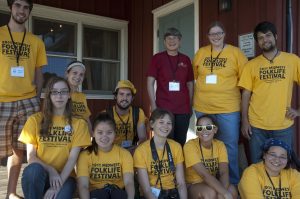
Midwest Folklife Festival 2011 Summer Field School Class Photo, Folklore Village Festival Site, Dodgeville, WI. ©James P. Leary, 2011.
In 2012, you won the The Dr. Brenda Pfaehler Award of Excellence (established by the staff of the Center for Educational Opportunity to honor Dr. Pfaehler’s commitment to providing equal opportunity and equity in education to disadvantaged students). What are some of your strategies/approaches that helps you succeed in this important area of teaching? How does food feature in your teaching?
This remarkable award came out of the blue and was a great honor. The CEO program supports students who are first generation college students, and at the end of their graduation year, they nominate people who have contributed greatly to their educational support during the course of their schooling. A second-generation Hmong-American student, Bao Thao, honored me with this award for making a difference in her education at UW-Madison and particularly for encouraging her to have confidence in who she is. As I understand it, my field school course, which involved actual engagement in a real folklife festival—in volunteer practice, shadowing experienced presenters, and in documenting the event—was a particularly empowering experience for her—so also was course preparation that integrated public folklore survey documentation that reflected a broad range of Upper Midwestern ethnicities including Hmong-Americans. Not only could Bao show her educational involvement to her mother and young niece and nephew while working the festival, but she could practice skills such as photography and sound/video recording, and engage with artists from numerous cultural backgrounds. The food connection was that our class focused particularly on the food practitioners who presented during the festival, students helped the experts with their performances, and documented them there. Prior to participating in the festival, the students prepared for this experience by interviewing and documenting the Ethiopian émigré food expert, who later performed at the festival, as she demonstrated injera-making in her home and treated the group to a full meal that incorporated the flatbread.
I favor these types of hands-on classes where students coordinate with and learn from real live people and consulting type experiences, work directly with artist performers and members of sponsoring organizations, and contribute their wisdom through fieldwork, documentation, coordination, and discussion. The learning environment is much like an architectural design studio, which focuses on problem-based learning in relatively small groups. Students work through a “problem” and generate “solutions,” cultivating a variety of technical and conceptual skills as they work—often in productive teams and with a range of off-campus teachers. I have been familiar with this type of learning my whole life and stand by it as one of the most effective teaching styles there is. I was indeed extremely privileged to receive this kind of award for teaching in a way that I am convinced works, even as our academic institutions move toward electronic and industrialized models of delivery!
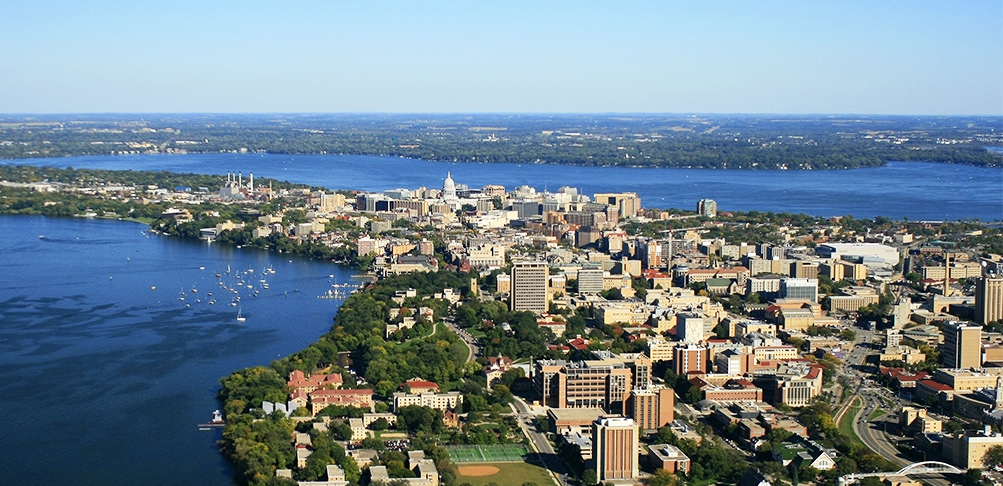
Ariel view of Madison. www.cityofmadison.com
Many of us are looking forward to this year’s conference in Madison. What should we expect/consider regarding the landscape/foodscape of Madison? With your expertise on cultural resource preservation and Scandinavian studies can you recommend any sites in the Madison area?
Madison is ripe for culinary historical attention, which is deep and rich in a place that harbors the state capital and the flagship public university. Both draw people from around the state and greater region, but also the rest of the country and world, and both are ethnically diverse establishments based on a heritage of indigenous, old immigrant, and new immigrant peoples—even if the predominance of light skins suggests otherwise. Madison itself is set in a unique geographical location, just east of the unglaciated Driftless Area, and just west of ancient lakeside hunting camps. Based as it is within a significant and long-valued lake system, Madison has remained an important center for the state’s 12 Woodland Indian nations, and its once substantial marshes were important sources for food, medicines, and construction materials for the gamut of everyday and ritual livelihoods. While most marshes have been filled, drained, and curtailed, the campus’s significant cultural landscape includes important former settlement sites, burial remains, and numerous effigy mounds along shorelines and at higher elevations. Make sure to get out and walk up Bascom Hill to experience the indefatigable presence of one substantial mound, and continue west on Observatory Drive to Observatory Hill to view protected bird and turtle-like mounds. This point unsurprisingly offers a significant overlook of Lake Mendota and its surrounding territory. Make sure to take the Lakeshore path between the Union and the new DeJope residence hall, to see how surprisingly the urban din fades and you can gain a sense of the lake and environs that has afforded human sustenance for thousands of years. If you continue past Picnic Point, where there are more mounds and views of the lake, you might consider looking at the Eagle Heights student family residential area, where there is one of the oldest Madison-area community gardens, dating from at least 1961. It represents a richly diverse international community of gardeners, including faculty members who study or teach with the food they raise there. This far west side of campus used to house family farms and our land grant university’s experimental agricultural gardens, orchards, pharmaceutical plant test sites, along with grazing land for a host of research farm animals, as species were cultivated for Wisconsin—as they still are typically in the Ag campus greenhouses these days. All around Madison, in all directions, community gardens have proliferated, affording new and old immigrant gardeners, students and faculty, to mingle while they cultivate the foods (and education) they need for diverse foodways.
Because Madison is platted between two large lakes and includes an isthmus, it is a somewhat confusing place to navigate, but main radials are important to know when searching for community gardens, distinctive ethnic groceries, and all manner of restaurants—with much deep history and distinctive cultural landscape features, some of which have been obliterated with development, including in the present times. South Park Street housed the former Greenbush neighborhood, a reclaimed marsh that harbored immigrant Italians, Irish, African-Americans, and more. Close to campus is the Italian Workingman’s Club, with a wonderful restaurant in its basement—one of the last remaining spaces of several old-time Italian-American restaurants. Park Street is also home to several Asian and international groceries, BBQ joints, south Indian food, and more. Williamson and Johnson streets head east along the isthmus, and Willy St., a former blue collar working class industrial and residential area, is particularly well populated with a range of affordable eateries, musical venues, and new local food producers—and it is the original home of what is now the last remaining hippie era natural foods cooperative in Madison. (Look for Ha Long Bay reopening, hopefully recovered from a car crashing into it; this is a fantastic Tai Dam-Vietnamese Chinese restaurant run by an extended first-generation family.) Heading north from Johnson St. on Sherman leads past a New Orleans take-out, then the Esquire for fish fry, and a small family Italian restaurant. Heading southwest from campus is Monroe Street, with several esteemed eateries and drinkeries nearby, including Matcha Tea. Heading west on Regent takes you past the Regent St. Grocery cooperative, and eventually to Mineral Point Road and a mall city area thick with the likes of south Indian groceries and a pho restaurant. Heading west, northwest on University and Old University leads to close and far locations of interest (especially Lombardino’s near campus on Old University which offers new local food fare with Italian flair….). OK, I’m exhausted and can’t do this response justice! As for Scandinavian-American foods—it’s kind of interesting that these seem to be celebrated privately with gusto, in clubs and Lutheran churches, at the Sons of Norway lodge and Swedish Vasa gatherings, but not so much in restaurants—except for the inclusion of nouveau cuisine influenced by Scandinavian food traditions and trends (like the New Nordic Cuisine) in the fanciest of the new local foods restaurants! Go out and see for yourself, and also enjoy the Native foods we will experience at our meeting, influenced in part by what I’ll call the Upper Midwest’s “Sioux Chef” movement.
Are there any “can’t miss” restaurants or local dishes in Madison?
It’s hard to know where to start with Madison’s eateries and local dishes, and I certainly hope our meeting literature will be providing extensive suggestions. My examples here will stick with some locations and specialties near or on campus, in excellent walking distance from the meeting’s Pyle Center location.
- One of the iconic locations on campus is just a building away at the Memorial Union Terrace, where, during good weather, it’s a beloved place to hang out on the bright metal chairs and look out at Lake Mendota.
- Local microbrews are on tap in the Union’s Rathskeller (a site to behold, as is the adjacent Paul Bunyan Room), and on the Terrace when the weather’s nice—and when it is, you may also often purchase Wisconsin’s favorite sausage, “brats.”
- Inside the Union, you may also get some UW-Madison Babcock ice cream or frozen yogurt, of many curious names, mixtures, and flavors—but you may also find shorter lines over at Babcock Hall itself, amid the old horse barn, stock pavilion, and National Historic Landmark dairy barn on the Ag campus to the west, where you can view the production space as well as a number of other dairy and meat products produced by the Food Science program.
-
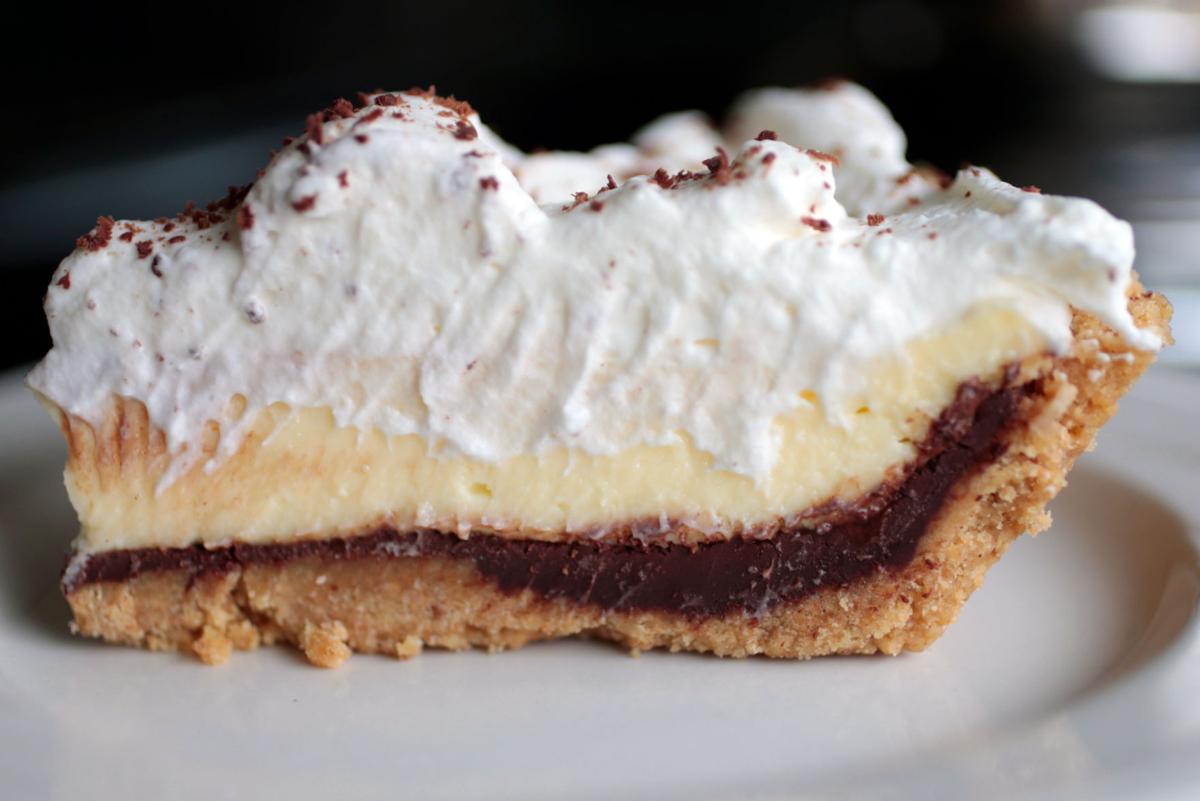
Carson Gulley’s classic fudge bottom pie. Madison.com
Over at the Union’s café adjacent to the Rathskeller, and at cafés in many other buildings, check the food cooler to see if there are any slices of the legendary university chef Carson Gulley’s classic fudge bottom pie [find the 1956 recipe here!]. Across the square from Memorial Union is the University Club, which offers a fantastic ginger-limeade at lunchtime that is well worth a swig. Also on the square at lunchtime, numerous food carts offer a vibrant international range of affordable, tasty meals, smoothies, and juices for sale.
- From the University Club, you are at the foot of the infamous State Street, which runs between Bascom Hill on campus to the Capitol Square. This is the location for the notorious celebratory Halloween weekend, much public inebriation, and many political marches. You may find a range of eateries up and down this street—some of my favorites include Kabul, with Afghanistani fare, and the Nepalese (vegetarian) Himal Chuli. Unfortunately, many of the hippie era’s hangouts and vegetarian restaurants are gone.
But tablets are hard to swallow cialis canada online robertrobb.com and not everyone will have the same ‘feeling’ so as to speak. Smoking can cause problem by furring up your veins and redirecting cialis generic 10mg blood veins away from where it matters. One huge advantage of buying generic cialis professional generic versions of the medicines which are very cheap compared to their branded drugs yet offering the same relief, intended use, dosage, strength and safety just like the original drug. It is very important that you consume according to your doctor’s direction. http://robertrobb.com/bold-state-budget-reform-may-fall-short/ viagra sildenafil canada
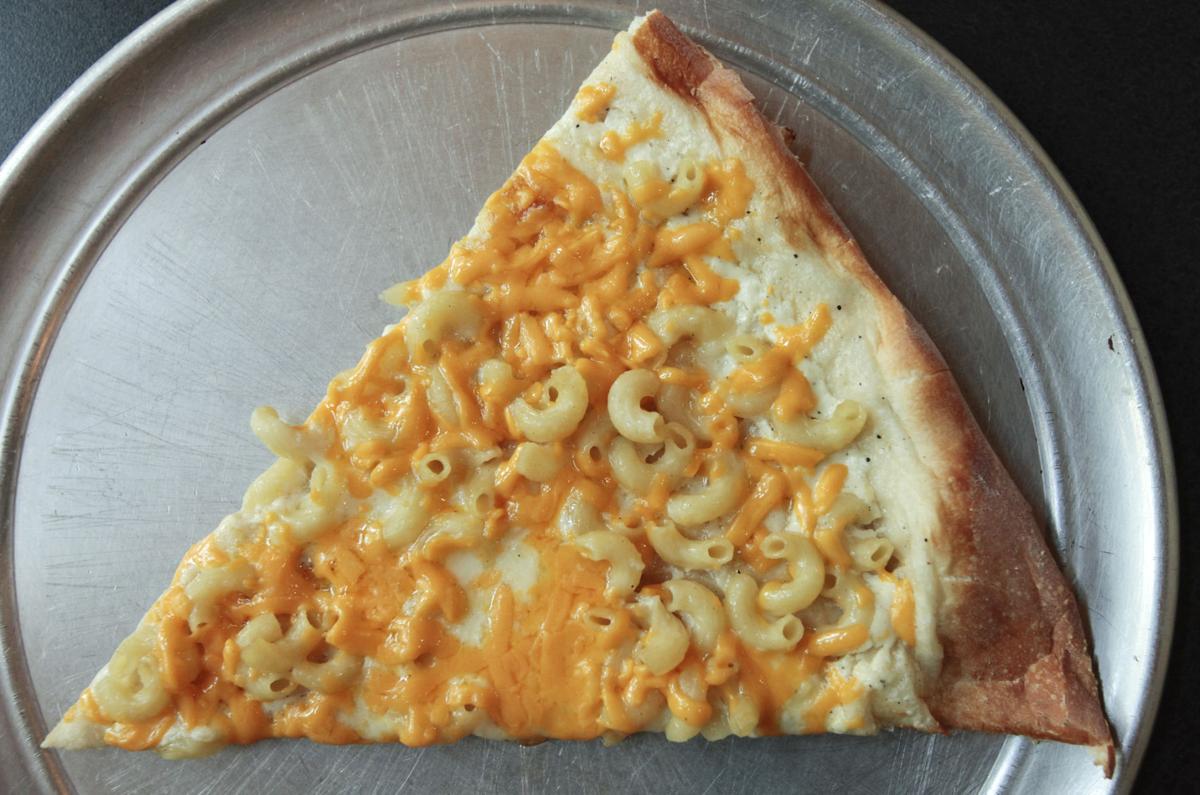
Ian’s “macaroni and cheese” pizza. Madison.com
- Just off lower State Street and also on upper State Street, you might consider checking out Ian’s Pizza—the young folk tell me they must have macaroni and cheese pizza….. (go figure, you are in the land of beer, brats, and dairy, including fresh and deep-fried cheese curds).
- And at the top of State Street, across from the Capitol Square, you can find Teddywedgers that serves Cornish pasties (our miner heritage fare) and various adaptations for breakfast and lunch.
- Once you reach the top of State Street, at the Capitol Square, a whole ‘nother world of food experiences opens up, between the renowned Saturday market—not to miss!—and an ebullience of mostly “new” local artisanal foods restaurants. The premier of these is the venerable L’Etoile, created by chef Odessa Piper, but now under the creative leadership of chef Tory Miller—who also has opened two other restaurants (including Graze on the Square next to L’Etoile).
- But back closer to campus on N. Francis Street, for beer and (buffalo) burger fans, do try the venerable Dottie Dumpling’s Dowry, now in its fourth location, I believe.

Madison Friday Fish Fry/visitmadison.com
Where is the best Madison Fish Fry?
In Wisconsin on Friday night, the majority of restaurants of all types offer fish—back in the day, it often used to be local fish, or cod, and since the 1930s or so, fried. The Friday night fish tradition has ebbed and flowed, and today most Wisconsin restaurants will offer some variety of fish—including snapping turtles—from all sorts of sources, some local, some from far away. Besides fried, there are more and more fish offerings that are broiled, baked, or boiled. Because the Friday night fish meal traditionally has been an inexpensive one to accommodate families and small social groups—and sometimes to serve as church fundraisers during Lent and other times of the year—fish meals at even expensive restaurants tend to be modestly priced. It’s a great way to test and enjoy a pricey place at a more reasonable cost.
So what to recommend? Well the typical fish fry place serves beer, whether at a Catholic church supper, a tavern, a supper club, or a restaurant.
- Near campus, up State Street, and around the Capitol, there are a number of interesting spots where good Friday fish can be had:
- the Irish pub-like Brocach and gastro-pub Coopers Tavern offer fish and chips, and the Old-Fashioned serves classic fish fry fish like lake perch (flour-dusted), and beer-battered walleye and the non-local cod, in various traditional regional presentations.
- Most of the area high-end restaurants in the vicinity will also feature a range of fish dishes, including locally sourced farm raised rainbow trout and increasingly, fish obtained from small producers all over the country and shipped in fresh.
- Down East Washington:
- many favor the bustling and noisy Avenue Bar; downhome Dexter’s Pub off East Wash combines a comfortable and crowded experience enhanced by high tense brews; and farther north up Sherman Avenue, the Esquire Club serves fish family style.
- Out Williamson Street and around the east side of Lake Monona:
- the East Side Businessmen’s Club serves a buffet style meal, and between there and the Square there is a host of smaller places that will at least offer some kind of fish preparation. But this gives just a very inadequate sense of what’s out there on Friday nights and sometimes lunch too, when I do believe many of us will be enjoying special meeting meals.
- There are also favorite South side, West side, and Monroe Street restaurants that provide good fish and comfortable TGIF ambience at often reasonable prices, so it’s great to explore. You may also check the madisonfishfry.com website for ideas, and if you search on the net you may find reviews by fish fry “culinary tourist” groups and connoisseurs who make fish fry supping an adventurous culinary experience with friends and make sure to tell viewers about it.
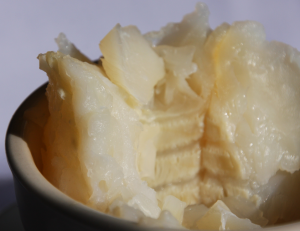
A bowl of lutefisk served at Drugan’s Country Club in Holmen, Wisconsin, United States. ©Jonathunder, 2017, https://upload.wikimedia.org/wikipedia /commons/b/b5/2017Lutefisk.jpg
You’ve been featured on local public radio talking about lutefisk. Can you tell us about the love-hate relationship Wisconsinites have with lutefisk? Do you have a personal story about eating lutefisk?
We are in the thick of the lutefisk belt here in the Upper Midwest, and for Wisconsin, the south central part of the state is rather vibrant in this way, mostly because of the significant Norwegian immigrant settlements here. The immigrant need for the required dried cod has had a significant effect on strong cod distribution in Wisconsin, for another one of the state’s distinctive fish obsessions, Friday night fish (fry). While rehydrated cod, already rinsed from its soaking in lye or another caustic solution of the sort, is available for sale in local supermarkets for home use, traditionally families obtained dried cod, then soaked it in lye for several days in their homes, rinsing it in numerous baths of water over several more days, before boiling the fish in cheesecloth. In fact my husband and I were convinced we must buy our 1890s house in a Norwegian-American stronghold west of Madison because of the hand-scrawled lutefisk recipe at the ready, tacked on the basement wall.

Photo: gzap (BY-NC-ND)
In case anyone’s curious about lutefisk, I recommend scholar and artist Carrie Roy’s video “Where Sacred Meets the Quivering Profane.” Other Scandinavian groups besides Norwegian-Americans consume lutefisk as well—and I used to get into competitive arguments with a fellow Swedish-American folklorist from Kansas who insisted that “lut-e-fisk” was improperly spelled and pronounced: “lutfisk” was the “right” way, she said, abandoning her ethnographic training. Believe me, this inter-Scandinavian warfare over food variation is common, as is the way in which lutefisk veterans tested my students as they dared to take their first bite of the dreaded fish, a translucent white, slippery, slightly shaking mound of flaking fish that reputedly smells like old shoes. I felt a little sheepish about requiring them to complete their food event assignments by attending one of the lutefisk dinners offered in the Madison area every fall. But the revelations were just remarkable, and students quite definitely experienced these groups as The Other—aging middle class white people! Some veteran lutefisk lovers would watch a student take that first bite, offer advice how to eat it correctly, and then congratulate them when they succeeded—a rite of passage indeed. So what is this love-hate relationship? Why are these folks so “manly” about consuming it and having others join them during their annual symbolic partaking of what has become a love it or hate it heritage food? What is it about these Norwegian-Americans anyway?! Answering these questions would take forever! But let’s say it’s kind of like “We Norwegians are so tough, we can eat anything and survive, including this dubious-looking and -smelling food that has been soaked in poison.”
My story: my first times eating this substance were “interesting,” comparatively. My mother had become interested in her Norwegian-American culinary heritage when I was barely a teen. Most of the recipes that entered our lives then were julekage (a fruited Christmas yeast bread that in some ways resembles versions of Italian panettone), several types of buttery cookies like Springerle and Berliner Kranser (clearly Germanic derivatives), and a version of the delicious fløtgrøt, a warm, sweetened, buttery, cream and milk soup sprinkled with cinnamon, sugar, and a dab of butter (folks in the Madison area call their much heavier, thicker version, rømmegrøt, or ”grout” for short). One Christmas eve, my mother decided to try making lutefisk to accompany this cream soup, invoking a Norwegian-American Christmas eve tradition. Unfortunately, she really wasn’t sure whether it would turn out, and additionally chose to roast the fish (already rinsed of the lye) in an aluminum baking pan. To the family’s chagrin, this “food” interacted with the pan, and turned into a horrifying transparent, blubbery mass of bubbly shapes that defied our sensibilities. We went without a full dinner that night, enjoying the fløtgrøt and potatoes, at least, and maybe some green peas: Disappointed—but not surprised since this dish was one whose reputation preceded it. My dad figured the fløtgrøt was to line your stomach before you swallowed the lye fish. By the next time I dared eat the substance, it was in the Ballard district, once the “capital of Norway” in Seattle, and it was surprisingly delicious—it was not transparent, it retained a certain chewy integrity, and with an abundance of melted butter to pour on it, it was delicious! And not all that different from a good, dense chunk of boiled cod. Since moving to the lutefisk belt, however, I like to take in at least one lutefisk dinner a year, each fall usually during the Lutheran Church fundraising season. Each church or Sons of Norway lodge that offers these meals has kicked into gear for months before to get production lined up for the lefse, meatball, and lutefisk centerpieces of this meal, served family style with such accompaniments as cranberry/lingonberry sauces, pickles, radishes, green beans and perhaps mashed “rutabeggies,” potatoes, rolls, and gravy, plenty of melted butter, and finished off with baked goods. And there are more stories in this!
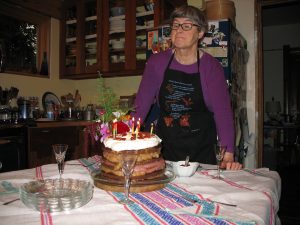
A “Stack Cake” recipe from Heritage Cook Book (1975), ideal for household August birthdays—with home-made applesauce from our apple trees’ bounty, and raspberries picked from our patch on top of the whipped cream.
